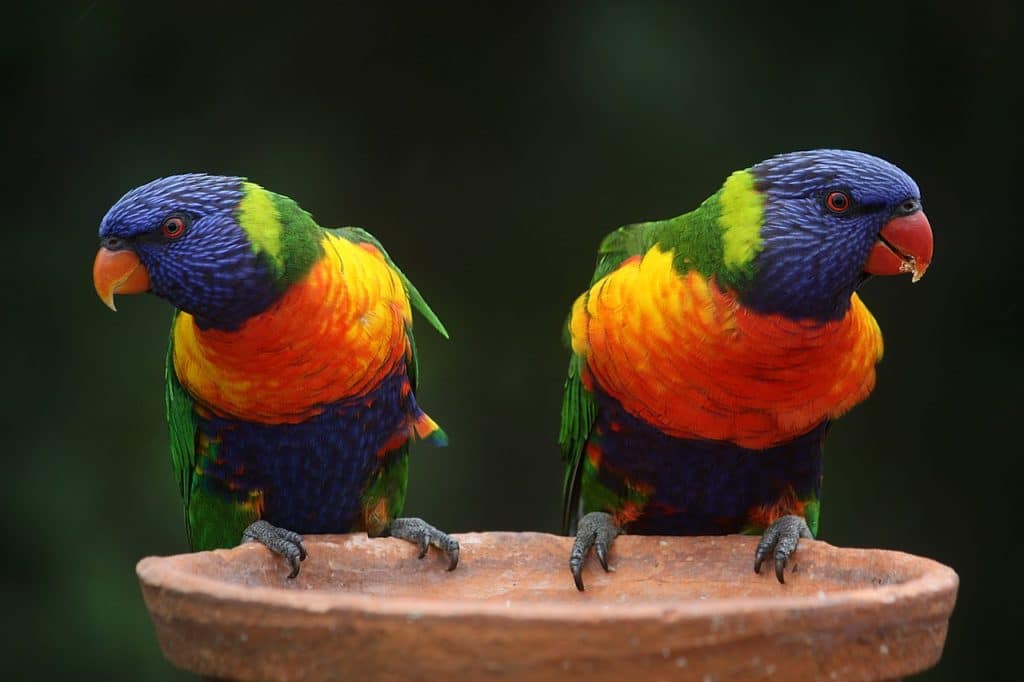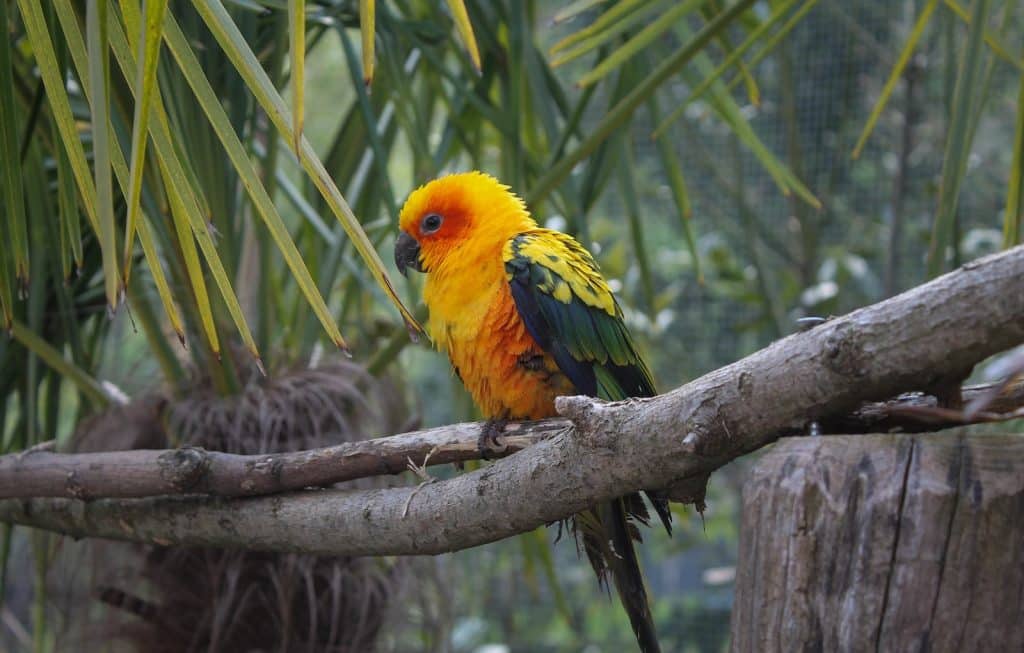
Parrotlets are the smallest members of the parrot family. They are smaller than budgies but have an enormous personalities. Because they are intelligent and can become bored quickly if not provided with enough stimulation, they need a large cage.
They need toys, swings, and space to stretch their wings. However, no matter how large the cage is, it must be safe and secure. If they have the opportunity, these active birds will find a way to escape. We have provided information on choosing the right size cage for parrotlets and answered questions about this special member of the parrot family.
Parrotlets
Parrotlets are small parrots, as their name suggests. They are actually the smallest parrot breed in the parrot family. However, they are closely related to Amazon parrots. Although pocket parrots can live up to 20 years, many will live for at least 30.
They are tiny, but they are very intelligent and can be quite vocal. They are native to South and Mid America. In the wild, they can be found in groups of four to 100 birds. They are smaller than standard budgies and are therefore large birds trapped in a small body.
They are intelligent and affectionate and can form strong bonds with their human owners. Parrotlets can learn to speak, although this skill is often associated with larger parrot breeds.

How to Choose the Right Size Cage
Parrotlets require a lot of stimulation and socialization, both mentally and physically. They also require a safe and secure environment that allows them to live happy life. These steps will ensure you have the correct size cage for your parrotlet.
1. Bar Width
Parrotlets are small birds that can squeeze through small cages. The spacing between bars should not be greater than 5/8 inch. Ideally, the gap should be less than 1/2 inch. This will keep the bird from jumping between the bars.
2. Cage Security
Parrotlets, intelligent birds, are able to solve puzzles. This includes opening a door that’s not locked or latching. You will need to make sure that all the openings in your parrotlet’s cage are locked and securely sealed.
3. Minimum Size
Parrotlet cages should be at least 18 inches in size, but larger sizes are acceptable. They will have plenty of space to exercise and spread their wings. This site also allows them to have enough space to carry all the things they need in order to live a happy life. This breed does not have a maximum cage size, but it is important that your bird doesn’t lose its place while moving from one side to the next.
4. Accessory
Parrotlets are an active, intelligent little breed that needs lots of stimulation. He will need toys, swings, and perches as well as furniture. He will need food and water. An 18″ x18″ cage should have enough space for all these items. However, if you are able to provide more space, your bird will be grateful.
There are other factors to consider
While size is important when choosing a cage for your pet, it doesn’t mean that it is the only thing. Important factors include the shape and material used to construct the cage.
Are Parrotlets better in pairs?
Parrotlets can be considered dimorphic which means they will easily pair up with other birds. A pair of parrotlets will rarely fight or squabble. Some owners prefer to have one parrotlet, as it is more likely that the bird will bond with its human owner.

Which Color Cage is Best for Birds?
From the bird’s perspective, there is no preference for cage color. But, dark colors and particularly black cages will show off your birds more so you can enjoy them.
What materials should be avoided when choosing a bird cage?
Ideal birdcages should be made from powder-coated or stainless metal. These materials are long-lasting and safe while still being strong and durable. Avoid painted finishes and iron as these can be toxic. Lead and zinc, which were used in the painting of older cages can be hazardous for your bird.
Do Birds Hate Round Cages?
Birds don’t necessarily dislike cages. Most birds prefer privacy and are more comfortable in corners. A round cage is not possible for birds, and your bird may become stressed more easily. For your bird’s personality and well-being, rectangular and square cages are better.
Last Thoughts
The parrotlet is a small breed of parrot but he has a lot of personality. You can ensure that your parrotlet gets enough exercise. You must meet minimum cage dimensions, ensure that bars are not too far apart, that doors are securely closed, and that your parrotlet cannot escape. Enjoy this chatty, friendly bird.
How big of a cage should a parrotlet have?
18 x 18″ A single parrotlet should have a cage that is at least 18″ × 18″. A bigger cage is sufficient.
Can a parrotlet’s cage be too large?
The most vital aspect of a parrotlet cage: there is no such thing as “too big!” This implies that although parrotlets are little birds, they require a lot of room since they are quite territorial.
What is the ideal size cage for finches?
The horizontal space of the cage is more significant than its height. A cage 30 inches long, 18 inches high, and 18 inches broad should be plenty for a pair of finches.
Do parrotlets require a lot of care?
Parrots thrive on human attention, and it is critical to their mental well-being. Being locked up and abandoned in a cage for hours on end is not a very satisfying existence.
How can I make my parrotlet quieter?
Give your bird a little spritz bath. The word “gentle” is stressed. You are not hosing your bird off his perch to keep him quiet; instead, you are providing him with a healthful, pleasant “spa treatment” diversion.
Should I keep my parrotlet covered at night?
Covering your bird’s cage at night gives a regular period of privacy that is not normally permitted during the day. Furthermore, it keeps the bird quiet early in the morning, when it would otherwise become busy and loud. Continue to cover your bird’s cage at night if you already do.
How do I clean the cage of my bird?
At least once a week, the entire cage should be sprayed, cleaned, or scrubbed out with a non-toxic disinfectant soap and hot water. Most disinfectants should be left on the surface for 15 minutes before scrubbing thoroughly.
How long can I abandon my parrotlet?
Parrots are gregarious animals who become distressed when left alone. They require company and human connection for at least two hours every day, and should not be left alone for more than six or eight hours. Your bird should spend enough time with you to feel as though you are a member of its flock, a comrade.
When should parrotlets go to bed?
Remember that your bird needs at least 10 hours of darkness every day, so if the sun rises at 6:30 a.m., you should not leave your bird up after 8:30 p.m. the night before.
How is the appropriate cage size for each bird determined?
The minimum height of a cage should be three times the length of the largest bird to be contained in it, and this should be raised if more than one pair or more than one species is housed in the cage.